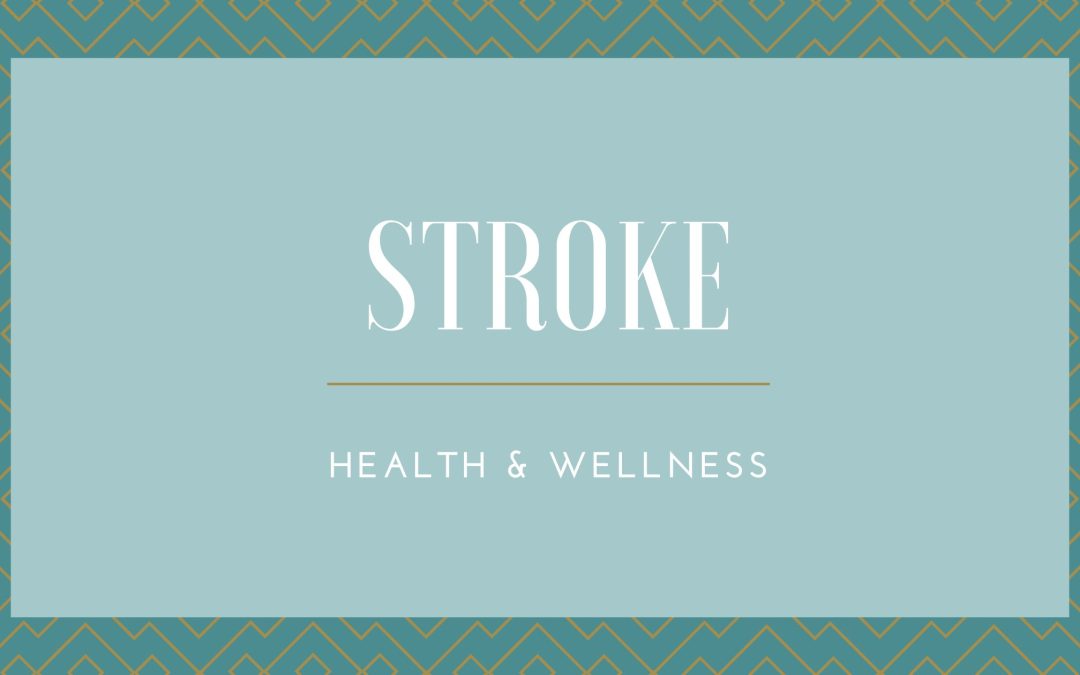When it comes to strokes, trusting your instincts can save your life. That was the case recently for a retired nurse, in her early 80s, when, in the course of a day, she found it difficult to do simple tasks like write, tie her shoes and turn on a light switch. While she passed the FAST test she performed on herself, (indicating symptoms), she knew something wasn’t right and suspected the onset of a stroke. Later in the ER, it was confirmed that she, in fact, had an ischemic stroke that left some (repairable) effects to her right hand.
What is a stroke? It’s like a heart attack in the head. It’s a disruption of blood flow to the brain, either due to a blockage or a blood vessel bursting. More importantly, it is the fifth-leading cause of death in the U.S., according to the Centers for Disease Control and Prevention (CDC), and it’s a leading cause of disability.
The two types of strokes are ischemic, the most common type which occurs when a blood clot cuts off supply to part of the brain and hemorrhagic strokes – a more disabling, deadly stroke – which is brought on when a weakened blood vessel in or around the brain ruptures, causing bleeding into the brain.
One of the most recent misconceptions about strokes is that they only happen to seniors. Studies shows that stroke rates are declining in adults 75 and older while increasing in young and middle-aged adults. In fact, researchers found an 11 percent overall rise in hemorrhagic strokes over a 15-year period, and increases were highest in that age group.
That may be because a 2020 study found that almost 30 percent of adults under the age of 45 don’t know the five most common symptoms of a stroke.
An easy way to remember the main symptoms is the acronym BE FAST.
Balance loss
Eyesight changes (blurred, double vision or trouble seeing in one or both eyes)
Face drooping (or numbness)
Arm weakness (If you raise both arms in front of you, does one or both droop down?)
Speech difficulty (or a loss for simple words.)
Time to call 911
Seeking care quickly is key when it comes to a stroke because there is a very limited window of time for doctors to use the clot-dissolving drug tPA ( within three hours of the onset of an ischemic stroke) or operate to remove the clot. If someone is with you at the onset of a stroke, they should make note of the time for physicians.
There are other stroke symptoms that people need to recognize like a persistent severe headache, dizziness, nausea and vomiting. As our nurse at the beginning this article, some patients experience trouble doing simple tasks like writing or turning on a light switch with none of the other symptoms.
Sometimes stroke attacks vision or leaves a person with tingling or weakness. Some people, after a stroke, have difficulty swallowing, or get a frozen shoulder, or stiffness and spasms in a weak limb. In severe cases, patients are left with paralysis on one side or worse – die.
According to the American Stroke Association, about 240,000 Americans experience a transient ischemic attack (TIA or mini-stroke) each year, when blood flow to the brain is temporarily blocked. The symptoms of a TIA are the same as those of a stroke; some patients have additionally reported pressure in the head, but no pain and snowflake-like lights in their side vision.
Risk Factors for a Stroke
High blood pressure- The leading risk factor. The CDC estimates that 1 in 3 U.S. adults with hypertension don’t know they have it and are not being treated for it.
- Obesity
- High cholesterol
- High blood sugar
Scientists at the American Heart Association report that conditions that historically have shown up in patients 60 and older are now occurring in younger people.Experts say over 44 percent of middle-aged Americans are obese and the CDC reports that more than half of those 40-59 have the other risk factors.
There is good news. The CDC reports that 80 percent of strokes are preventable, even if you have a family history of them.
Ways to Avoid a Stroke
- Don’t smoke.
- Stay physically active. (even if it’s a brisk walk for 30 minutes three times a week)
- Limit your alcohol intake.
- Maintain a health diet. (Leafy greens, citrus fruits, walnuts, fatty/lean fish, yogurt)
- Get enough sleep. (at least seven hours)


Recent Comments